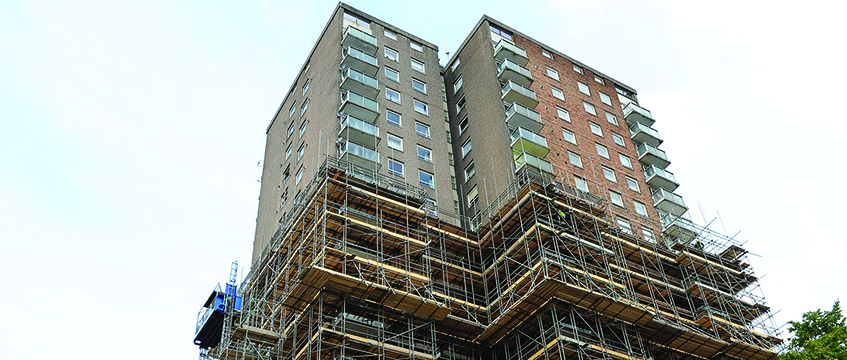Everyone reading this article will occupy, operate or own an existing building or buildings. Whichever is the case, it is more likely than not that your building will still be in use in 2050. In fact, 80% of the buildings with us today will still be in use in 2050.
The planet is facing a climate emergency and the UK has legislated to become a net zero emitter of greenhouse gases by 2050, Scotland by 2045, and more and more cities and organisations are pledging to be “net zero” by 2030.
The media is full of reports on the environmental impact of our travel, transport and diet choices. However, with the energy consumption of existing buildings accounting for around 35% of the UK’s annual carbon emissions, we all need to be looking closer to home (and the office) to make a bigger impact in reducing our carbon footprint.
If not now, when?
Much attention is paid to new build performance and, although challenging, we know how to construct new, ultra-low energy “net zero carbon compatible” buildings. Net zero carbon compatible buildings are designed and built to minimise carbon emissions throughout their life cycle. Organisations such as LETI and RIBA give guidance on suitable targets for embodied carbon and energy use intensity of new buildings. While I would encourage all new build clients to include net zero carbon in their briefs, the real elephant in the room is how to go about reducing carbon emissions from our existing stock. The question should not be whether to retrofit, but how deep and how soon to retrofit.
The first step to retrofitting is to understand the environmental impact of your building and the opportunities to reduce its impact on the climate. It may be tempting to tackle only the “lowest hanging fruit” in a retrofit, however a “deep” retrofit should always be the aim.
Retrofit works will likely interrupt normal use of the building, and if only limited improvements are made, carbon emission reductions will also be limited. Completed retrofit measures will lock in performance well into the future, so it is important to get it right the first time. Aim to go as far as you can with each step of a retrofit before moving on to the next.
Retrofit should aim to maximise the feasible performance and aim for as close to new build net zero carbon compatible performance as possible. Retrofit performance standards such as the AECB’s Building Standard or the Passivhaus Institute’s EnerPHit certification could help provide target performance levels and act as a guide to retrofit.
Planning the complete retrofit in advance, rather than tackling piecemeal improvements, will help ensure that successive measures work in harmony and are implemented in a sensible order.
Minimising energy demands through improvements to the building’s thermal insulation, glazing, air tightness and ventilation systems should be a first step. Further energy demand reductions can be achieved through efficient lighting and controls, solar shading, using pumps and fans with EC direct drive motors and selecting equipment such as IT systems specifically for low energy consumption.
Reducing energy demands initially will mean that subsequent improvements like replacement of gas boilers with heat pumps will have a lower capital cost and operational energy costs will be kept as low as possible.
Self sufficiency
Finally, generating your own energy through technologies such as solar PV panels should be considered, energy storage using onsite batteries and integration of a demand-side response strategy could further reduce energy costs, carbon emissions and even generate income.
The challenge of ending carbon emissions is enormous and we need to accelerate the pace of change. Big UK banks and investors are setting out their environmental credentials, and although legislation forcing improvements on buildings owners is currently limited, this will undoubtedly evolve. In the meantime, we need pioneering organisations, building owners and occupiers to take up the retrofit challenge and influence positive change.
Andrew Leiper is principal engineer and net zero carbon Leader at Max Fordham











